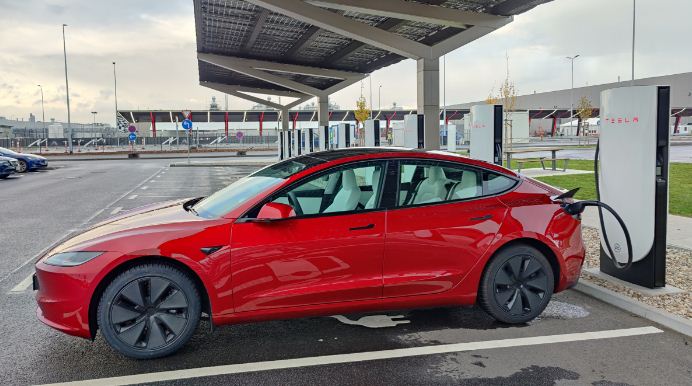Are Tesla’s phantom braking issues real, or are they just a myth? In a lawsuit between a customer and Tesla regarding unexpected braking, an independent expert confirmed that the Tesla Model 3 experienced this behavior. According to the report, after a phantom braking incident during the test drive, “significant dangerous situations occurred in the following traffic.” From the expert’s perspective, further testing of the vehicle on public highways was “no longer feasible for safety reasons.”
Please follow us on Facebook and Twitter.
For years, it has been known that Tesla’s assistance systems can cause phantom braking. This unexpected braking also happened when Golem.de tested a Model Y in September 2021. In a recent test of the newer Model 3 Highland, the assistance systems did not impress us either.

600 Test Kilometers on the Highway
In the trial at the Traunstein Regional Court, the customer is seeking a vehicle replacement due to issues with the assistance system. According to a 19-page report (PDF), the court ordered an independent expert to investigate the alleged defects in January 2024.
In August 2024, the expert drove 600 kilometers on the A3 and A9 motorways in Bavaria. The report highlights five instances where the autopilot “behaved implausibly.” These situations were captured by two cameras for documentation.
Typical Fear Braking
Two of the phantom braking incidents occurred in construction zones. The Model 3 slowed down in the left lane because there was a slower vehicle in the right lane that the Tesla apparently did not want to pass due to distance. In these construction zones, only the adaptive cruise control was active, while the steering assistant was off. According to Golem.de, such “fear braking” can also happen with other brands, as seen in a test of the Nio ET7.
In two other instances, the Model 3 unexpectedly reduced its speed to 80 or 90 km/h on regular highway sections. “There were no signs or similar indicators, and the road conditions did not justify this, in the opinion of the undersigned,” the report states. This behavior has been frequently noted in tests by Golem.de, likely because a speed limit was stored in the navigation system. However, this issue is also common with vehicles from other manufacturers.
Emergency Braking Caused
However, another situation was more serious. On a three-lane highway with no speed limit, the Model 3 suddenly braked sharply from 140 km/h to 94 km/h. Technically, there was no need for the vehicle to brake. “This situation led to significant dangerous situations for the traffic behind. Evasive maneuvers and heavy braking by following vehicles were observed,” wrote the expert.
Since “this situation posed an unforeseeable danger to the occupants of the vehicle and to other road users behind,” the test drive with the autopilot activated was stopped. The expert concluded that this particular incident aligns with the description of phantom braking mentioned in the evidence order.
Tesla Does Not Comment
According to the plaintiff’s lawyer, Christoph Lindner, the report is “particularly significant because it is the first time that an independent, court-appointed expert has confirmed the occurrence of phantom braking.” He expressed concern, saying it is “shocking that such serious safety risks are only noticed and taken seriously in the context of a civil dispute.”
According to a report by Handelsblatt (paywall), Tesla did not comment on the findings of the report when asked. So far, the company has consistently denied the existence of phantom braking, often attributing the issues to user error.




